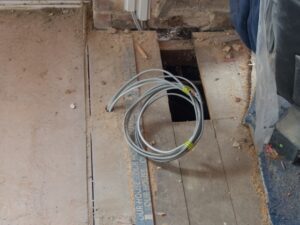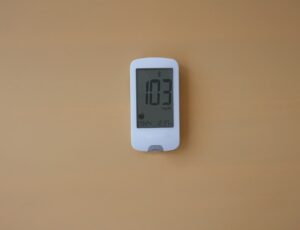Have you ever wondered if tossing a pinch of salt into your toilet could actually help keep it cleaner?
It might sound a little unconventional, but it’s true – salt can be a fantastic natural cleaner!
It helps remove stains and buildup, leaving your toilet fresh without relying on harsh, chemical-laden products. Plus, it’s a simple and budget-friendly option that you can easily add to your cleaning routine.
The best part?
Salt doesn’t harm your plumbing system.
It’s gentle yet effective, so you won’t need to worry about corrosion or damage, unlike some chemical cleaners that can cause long-term harm to pipes. Just sprinkle some salt into the bowl, scrub, and flush – it’s that easy!
Using salt for toilet cleaning is not only a DIY-friendly solution, but it’s also eco-friendly.
By skipping the chemical cleaners, you’re helping the environment, too. Imagine how many fewer chemicals would end up in our water systems if we all made small changes like this!
In this blog, you’ll learn:
- How salt helps maintain your toilet without harming plumbing
- The simple process of using salt for cleaning
- Why salt is a natural alternative to chemical cleaners
If you ever face bigger plumbing issues or want more advanced cleaning solutions, Excel Mechanical is here for you. Our expert team provides reliable HVAC and plumbing services, helping homes and businesses stay worry-free when it comes to plumbing maintenance.
Understanding the Basics of Toilet Maintenance
When it comes to maintaining your toilet, it’s not just about scrubbing away stains – it’s about ensuring everything is functioning properly so you don’t run into bigger plumbing issues later on.
Keeping your toilet in good shape means fewer clogs, fewer odors, and a longer lifespan for your plumbing.
So, how does salt fit into the picture?
Role of Salt in Water Treatment
Salt plays a significant role in water-softening systems.
It helps remove minerals like calcium and magnesium that cause water hardness.
Hard water can lead to scale buildup in toilets, reducing efficiency and increasing wear. By using salt, you soften the water, preventing these issues.
Water softeners often use a process called ion exchange.
In this process, sodium ions replace calcium and magnesium ions in the water. This helps to prevent mineral deposits from forming in the toilet tank and bowl.
Using soft water in your plumbing system can extend the life of your toilet. It reduces mineral buildup that can cause parts like the flush valve to malfunction.
Chemistry of Salt and Water Interaction
Here’s where things get interesting.
Salt dissolves in water to form sodium and chloride ions. These ions work their magic by interacting with the minerals in hard water, preventing them from sticking to the inside of your pipes and toilet bowl.
Think of it as a kind of water “cleanser” that helps your plumbing stay in better condition.
And it’s not just about preventing mineral buildup – salt can also be used in homemade cleaning solutions.
If you mix it with a bit of baking soda and water, you get a mild abrasive cleaner that can tackle grime without harming your plumbing. This is a simple yet effective way to keep your toilet sparkling clean!
Remember, regular toilet maintenance is KEY to avoiding costly plumbing repairs.
Cleaning Benefits of Salt
Did you know that salt isn’t just for seasoning your food? It’s actually a fantastic natural cleaner!
When you think of toilet cleaning, you probably imagine scrubbing away tough stains with harsh chemicals.
But what if you could avoid all those toxic cleaners and still achieve a sparkling toilet with something as simple as salt?
Sounds too good to be true, right?
Let’s break it down!
Salt as an Abrasive
Salt is a natural abrasive that can help scrub away stubborn stains.
Its gritty texture makes it effective for removing dirt and grime inside the toilet bowl.
Sprinkle salt on a damp sponge or directly in the bowl, and scrub gently. It helps tackle mineral deposits and rust, leaving surfaces cleaner.
When combined with baking soda, salt enhances cleaning power.
Adding lemon juice can boost its effectiveness even more. This mixture creates a thick paste perfect for tackling tough stains. This method is chemical-free and eco-friendly, making it safe for your home.
Antibacterial Properties of Salt
Salt naturally fights bacteria.
When used in your toilet, it can help reduce germs. This reduces the need for harsh chemical cleaners.
Make an antibacterial cleaning solution by mixing salt, vinegar, and water. Pour or spray this mixture around the toilet rim and bowl. Allow it to sit for a few minutes before scrubbing. This combo works to sanitize your toilet and is simple to prepare.
Salt’s antibacterial traits make it a helpful tool in keeping your bathroom hygienic. Regular cleaning with salt can help keep bacteria levels low, offering safety for your family.
Deodorizing Effects
Let’s be real – toilets can get stinky.
Between the water, soap, and sometimes unpleasant odors, it can feel like an endless battle to keep things fresh. But guess what?
Salt can help with that too!
Sprinkle a little salt in and around the toilet bowl, or even create a salt-water mixture and pour it down the drain to neutralize odors.
In fact, a salt solution can help maintain a fresher, more pleasant-smelling bathroom. You can even add a few drops of your favorite essential oils to the mix, leaving your toilet smell nice without resorting to those overpowering air fresheners.
Practical Applications
Now that you know why salt works so well in your toilet, let’s dive into how you can actually use it. You might be thinking, “Is this really all I need to do to keep my toilet clean?”
Absolutely!
Salt isn’t just a one-time fix; it’s a simple addition to your regular toilet cleaning routine that can save you time and effort.
Common Usage in Household Cleaning
Salt has been used for centuries as a cleaning agent.
It’s one of those “old but gold” cleaning hacks.
When applied to toilet bowls, it can help scrub away stains and mineral buildup. This works especially well if you live in an area with hard water, which can leave behind stubborn limescale and calcium deposits.
Here’s how you can do it: Simply sprinkle a good amount of salt directly into the toilet bowl. Grab a toilet brush and scrub!
You can also let the salt sit for about 15 to 30 minutes to allow it to work its magic on tough stains before giving it a final scrub. The best part?
No need to worry about the fumes or irritation that some chemical cleaners cause. Plus, it’s safe for your plumbing!
If you want an even stronger cleaning mix, combine the salt with some baking soda and a dash of lemon juice. This trio works wonders on toilet stains and mineral buildup, and it’s completely eco-friendly.
Guidelines for Toilet Cleaning with Salt
So, how do you make sure you’re using salt in the most effective way?
It’s simple!
Here’s a step-by-step guide to keep your toilet looking fresh and sparkling:
- Gather Your Tools: You’ll need about a cup of table salt and a toilet brush.
- Sprinkle the Salt: Generously sprinkle salt around the inside of the toilet bowl, covering the stained or dirty areas.
- Wait a Few Minutes: Let the salt sit for a while—this allows it to break down mineral deposits or grime. You can even leave it overnight for a deeper clean.
- Scrub Away: Use your toilet brush to scrub thoroughly. Don’t forget to get into the corners where buildup can accumulate.
- Flush: Once done, flush to rinse away the residue.
This method is not only simple but works wonders for maintaining your toilet without the need for harsh chemicals. And, let’s face it, who wouldn’t want an easier and more natural way to keep the bathroom fresh and clean?
By regularly using salt, you can keep your toilet fresh, clean, and free from buildup, all while avoiding harsh chemicals that can harm both your plumbing and the environment.
It’s an easy, cost-effective, and environmentally friendly choice that will make a big difference in your cleaning routine.
Potential Disadvantages
While using salt in your toilet can offer great cleaning benefits, it’s important to keep in mind that, like any cleaning solution, there are potential disadvantages to consider.
We all love easy, natural solutions, but when it comes to our plumbing and the environment, we need to make sure we’re making the best choices long-term.
So, let’s dive into some of the concerns you might encounter.
Corrosiveness to Plumbing
Salt is known for its corrosive properties, which can damage metal parts in your plumbing over time. This can mean pipes may start to leak or degrade, leading to potentially costly repairs.
When saltwater travels through the plumbing system, it can wear down surfaces, especially in older pipes that might already be weakened.
Corrosion from salt is not immediate but can be gradual, which might make it less noticeable until significant damage occurs. This kind of damage can impact not just your toilet but other connected plumbing.
To avoid these issues, consider consulting experts. Companies like Excel Mechanical provide trusted plumbing services to ensure your system remains intact.
Environmental Considerations
We all want to be mindful of our environmental footprint, right?
While salt can do wonders for cleaning, it’s important to understand its environmental impact when it’s flushed down the toilet. Saltwater can end up in local sewage systems, and if it’s not properly managed, it can interfere with the natural balance of water treatment processes. In some areas, excess salt can disrupt local ecosystems, potentially harming aquatic life.
To be more eco-conscious, consider limiting the amount of salt you use and only use it when necessary. If you’re cleaning a toilet in a home with a septic system, you should be especially cautious.
Excess salt can mess with the delicate balance of bacteria in your septic system, affecting its efficiency.
Balancing the Benefits with Caution
The KEY here is moderation.
Salt can still be a useful tool in your cleaning arsenal, but using it too frequently or in excess could lead to problems down the line. So, how can you balance the benefits of salt with its potential downsides?
A great strategy is to use salt as part of a broader cleaning routine.
For instance, alternate between salt and other gentle cleaners like baking soda, vinegar, or even eco-friendly commercial products. This way, you get the cleaning power of salt without overloading your plumbing or harming the environment.
Alternative Cleaning Agents
We all want a clean toilet, but using the same cleaning method over and over can sometimes leave us wondering, “Is there a better way?”
Salt has its benefits, but it’s not the only natural or cost-effective solution for keeping your toilet fresh.
Let’s take a look at some alternatives that might work just as well, if not better, depending on your needs.
Comparing Salt to Other Cleaners
Salt might be a go-to in many households for a quick, eco-friendly clean, but let’s be real—sometimes it just doesn’t cut it.
When you think about all the options out there, you might start to wonder: What other natural ingredients can get the job done?
Baking soda is another great option for cleaning toilets.
It’s slightly abrasive, making it perfect for scrubbing stains without damaging your toilet’s surface. When combined with vinegar, the two ingredients create a fizzy reaction that breaks down grime and odors, leaving your toilet sparkling clean.
It’s also safe for your plumbing system, unlike salt, which can cause issues over time.
Natural and Chemical Alternatives
If you prefer to keep things as natural as possible, there are other alternatives that work wonders:
- Lemon Juice: A natural deodorizer, lemon juice is packed with citric acid, which helps break down hard water stains. Plus, the fresh scent is a nice bonus! Simply squeeze lemon juice into the toilet bowl, let it sit for a bit, and scrub. You can mix it with baking soda for added cleaning power.
- Essential Oils: These might not be the first thing you think of when it comes to cleaning, but essential oils like tea tree oil or lavender oil have antibacterial properties that can help sanitize and leave your bathroom smelling great. Add a few drops to your homemade cleaner or simply mix with vinegar for a natural disinfectant.
- Commercial Toilet Cleaners: If you’re in a rush and don’t mind spending a little extra, commercial toilet cleaners like bleach or disinfectant tablets are stronger and can eliminate tough stains and bacteria. However, be cautious—these products can be harsh on your plumbing and harmful to the environment, especially if used frequently.
By exploring and incorporating these alternatives, you can create a more sustainable and effective cleaning routine. Next time you’re tackling your toilet cleaning tasks, consider trying one of these solutions—your plumbing (and your wallet) will thank you!
Safety Precautions
When it comes to using salt (or any other cleaning agent) in your toilet, you might be wondering: “Is there a way to make sure I’m doing this safely?”
You’re right to think about the safety precautions—after all, your toilet is a place that gets used multiple times a day, and you want to make sure everything you’re using is effective and, more importantly, safe for both you and your plumbing.
Proper Handling of Salt
When you’re handling salt for cleaning purposes, it’s crucial to measure it accurately.
Use a scoop or a cup to ensure precise amounts. This prevents waste and keeps the toilet clean. Be careful when pouring salt into the toilet. Spillovers can make the floor slippery or cause damage to surfaces.
Store your salt in a dry place. Moisture can clump salt, making it hard to use.
Use a container with a tight lid to keep the salt dry. Always wash your hands after handling cleaning materials, to keep them clean and safe from skin irritation.
Combining Cleaning Agents Safely
Mixing different cleaning agents can create dangerous reactions.
Avoid combining bleach with vinegar or ammonia-based products. Such combinations can release harmful gases. It’s safe to add salt to the toilet, but know what else you’ve used recently.
Dilute chemicals properly. Always read the labels and instructions. Use water to mix or dilute agents if needed. This helps prevent any strong reactions and ensures the cleaning process is effective.
Ventilation is important. Open a window or use a fan to help air circulate when you clean, keeping the environment safe.
Consumer Advice
When it comes to toilet maintenance, we all want to find ways to keep things clean without breaking the bank, right?
That’s where adding salt to your toilet comes in.
It’s an easy, cost-effective method to keep your toilet fresh and functioning properly.
But how can you ensure you’re getting the most out of it?
Let’s explore how using salt can save you money, and how to make informed decisions when using it in your cleaning routine.
Cost-Effectiveness Analysis
Using salt in your toilet might help reduce the need for expensive cleaners. It’s less costly and has natural cleaning properties. This can be appealing if you’re looking to save money on bathroom upkeep.
Salt is accessible and can often be found at discounted prices, adding to its appeal for budget-conscious individuals. Consider using salt regularly to potentially decrease overall toilet maintenance costs.
When comparing salt with specialized cleaners, the upfront price of salt is notably lower, providing a chance for immediate savings. While it may take more time, it offers a budget-friendly alternative.
Product Recommendations
When choosing the right kind of salt, simple table salt may work well. However, larger crystals, like rock salt, can offer better results for scrubbing purposes.
For best results, consider using salt in partnership with a brush to scrub away stains and bacteria. Make sure you use the right amount to get the benefits without wasting the product.
For professional advice about your home or commercial plumbing, Excel Mechanical delivers great value and quality service. Our team can tailor the best solution to meet your needs and budget.
Frequently Asked Questions
When it comes to maintaining a clean and fresh toilet, many people have questions about using salt and its potential benefits. Let’s take a look at some common questions and provide clear, helpful answers to guide you through the process.
Will salt damage PVC pipes if used in the toilet?
Salt typically does not damage PVC pipes when used in moderation. It’s important to flush thoroughly after use to prevent any salt buildup.
How often should salt be added to the toilet for cleaning purposes
Adding salt to your toilet for cleaning can be done once a week. This can help reduce stains and remove minor buildup inside the bowl.
Can Epsom salt be utilized for toilet maintenance?
Epsom salt can be used but is not as effective as regular salt for toilet cleaning. It’s best suited for other household uses.
What is the process for cleaning a toilet bowl with salt?
To clean your toilet with salt, sprinkle a generous amount into the bowl. Let it sit for a few hours or overnight, then scrub and flush.
What are the effects of placing salt in a toilet according to Vastu Shastra?
In Vastu Shastra, placing salt in the toilet is believed to absorb negative energy. It is considered beneficial for creating a balanced environment in the home.
Is it advisable to use salt to unclog a toilet?
Salt can assist in unclogging minor toilet blockages when combined with other methods, like hot water and baking soda. It is not a guaranteed solution for heavy clogs.
For any plumbing needs, Excel Mechanical is the best choice. We offer expert service and tailored solutions, and we meet both residential and commercial needs efficiently. Choose us for quality and great value in HVAC and plumbing services.




